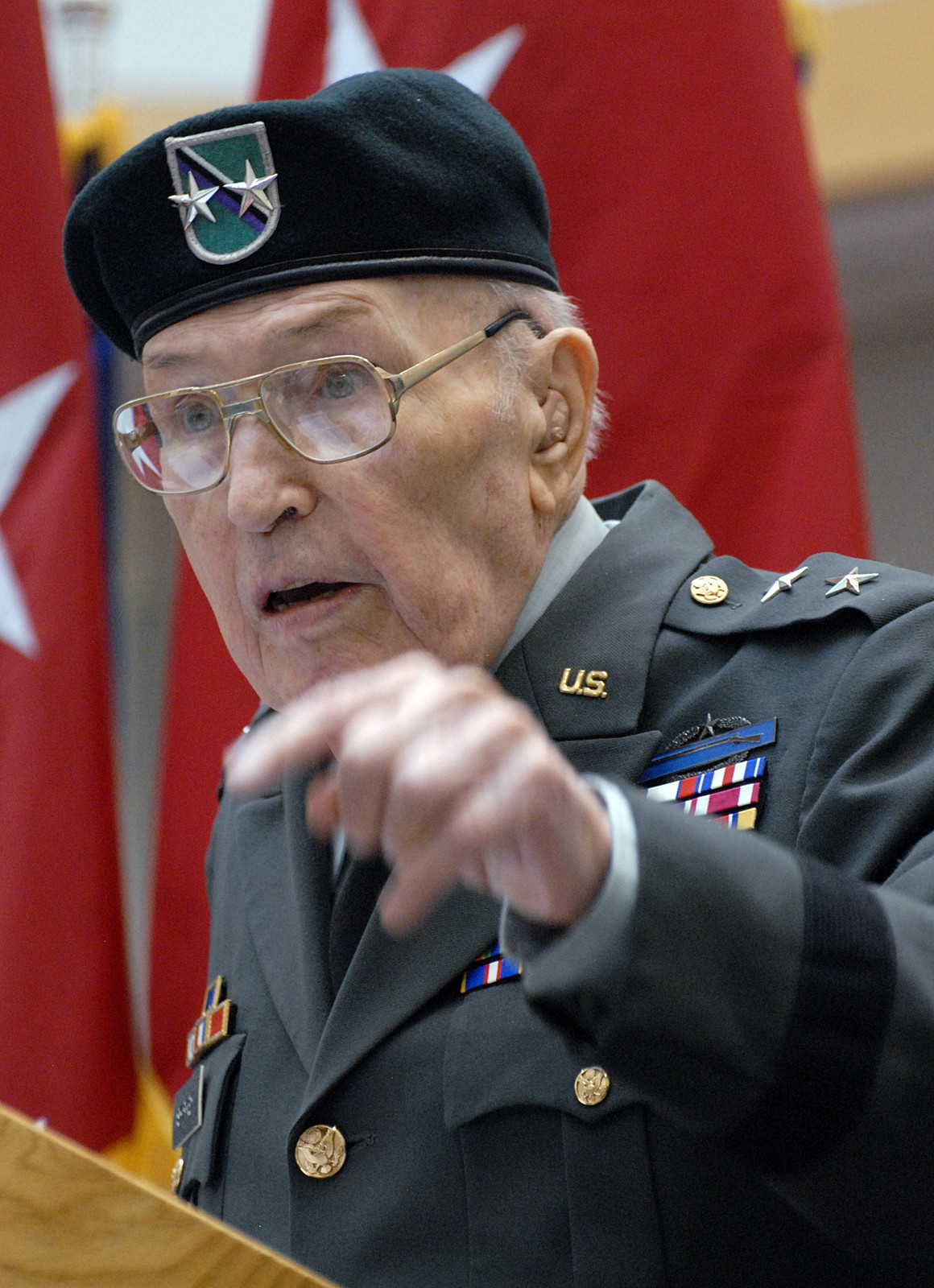FORT LEAVENWORTH, Kan. (Nov. 18, 2010) - Before there were Special Forces, there were 6th Army Special Reconnaissance units known as the Alamo Scouts.
Retired Maj. Gen. Robert L. Shirkey, former Alamo Scout team leader, presented an oral history of those units to the Combined Arms Research Library Nov. 10. The donation includes an audio recording of Shirkey's stories, mostly about the Alamo Scouts, and some of his written works, including "Reminiscences: Advice for Army Officers Delivered at Ft. Benning 27 April 1984," and "Soldiering and Teaching." The oral history has also been donated to the National World War II Museum in New Orleans.
Brig. Gen. Sean MacFarland, deputy commandant of the Command and General Staff College, accepted the donation. MacFarland said America's connection to the history told in Shirkey's stories is tenuous.
"People forget, before we were counterinsurgents, we had a history of insurgency or leading insurgents," he said.
MacFarland noted the Alamo Scout patch on Shirkey's uniform, saying that this is one of the only times modern Americans will ever see one in use.
According to the Alamo Scouts Association website, Alamo Scouts conducted more than 100 missions during World War II without a single man killed or captured, but because of the top secret nature of these missions, some are still unknown. In one famous mission, Alamo Scouts cooperated with Army Rangers to liberate Allied and civilian prisoners of war at Cabanatuan in the Philippines.
Shirkey credits the scouts for obtaining intelligence that allowed the U.S. and Allies to avoid the Japanese while conducting missions in the Pacific.
"To talk about the Alamo Scouts is an honor which I can't believe I was a part of," Shirkey said.
The Alamo Scouts operated in small five- or six-man teams, working many miles behind enemy lines to obtain information. Shirkey told stories about their bravery, their endurance and their brotherhood.
"We as a group had a fellowship that was second to none," he said. "I know it sounds incredible, but you don't go through something like that and not develop a bond."
Shirkey said he considered himself lucky to be a part of the scouts and to survive to tell their stories.
Roy Williams, representing the Col. Arthur "Bull" Simons Memorial Chapter No. 29 of the Special Forces Association, read the names of the men who were on then-Lieutenant Shirkey's team: Sgt. Richard G. Andrews, Staff Sgt. Donald D. Grimes, Pfc. Clyde S. Townsend, Staff Sgt. Clinton R. Tucker and Sgt. Michel S. Zwer.
"I've heard him say many times that he wants people to know what those men did," Williams said.
Williams said in one of their campaigns, the team was operating 65 miles behind Japanese lines in the Philippines. They were about to turn back when they captured a Japanese officer out foraging for food.
Williams said Shirkey often uses the word "trot" when he tells this story, how they would trot and stop and listen intently, watch the movement of the birds, look for animals that seemed to be alarmed. In 36 hours, the team traveled 65 miles, delivering the prisoner to American intelligence.
Shirkey later discovered the information provided by the prisoner eventually led to the location of a major target.
"I will say this, the Japanese soldier is one of the finest warriors in the world," Shirkey said. "I never saw one of them beg for their lives."
Chris King, CGSC dean of academics, said Shirkey's stories are useful for today's field grade officers. In class, students often discuss the difficulties of modern warfare and uncertainty of missions, he said. The Alamo Scouts represent that success can be accomplished, he said.
"There are amazing stories that shouldn't be lost," he said. "They're in the Army, we should be a keeper of those stories. There are heroes everywhere, you don't get to meet them everyday, but today we did."




Social Sharing